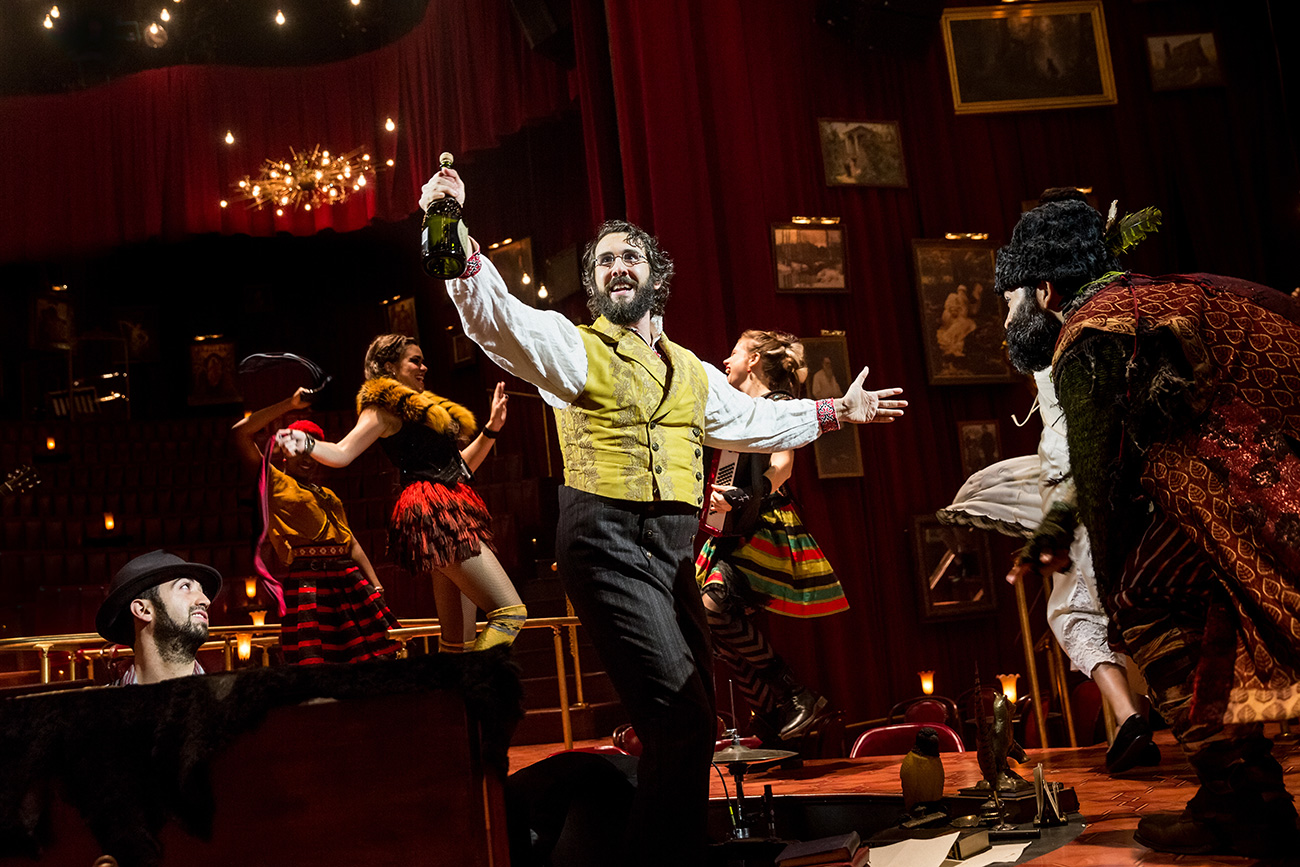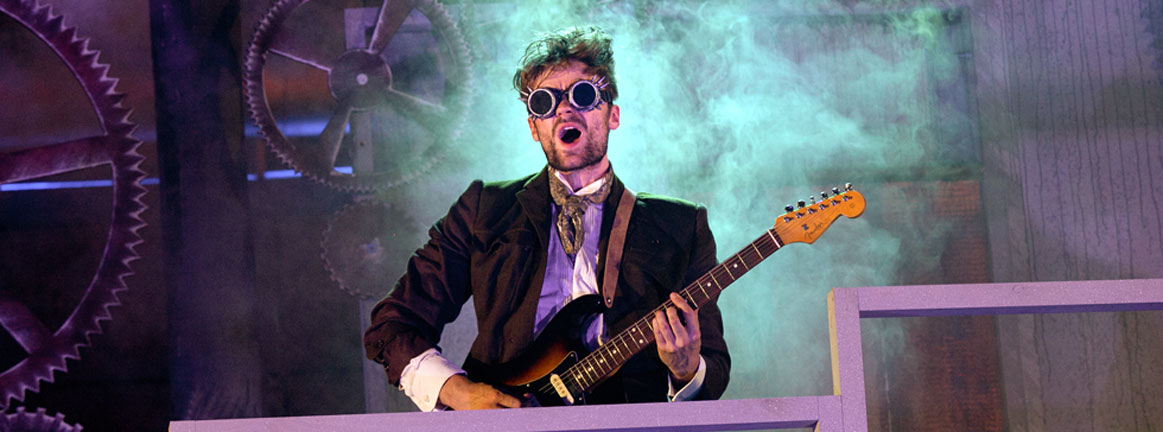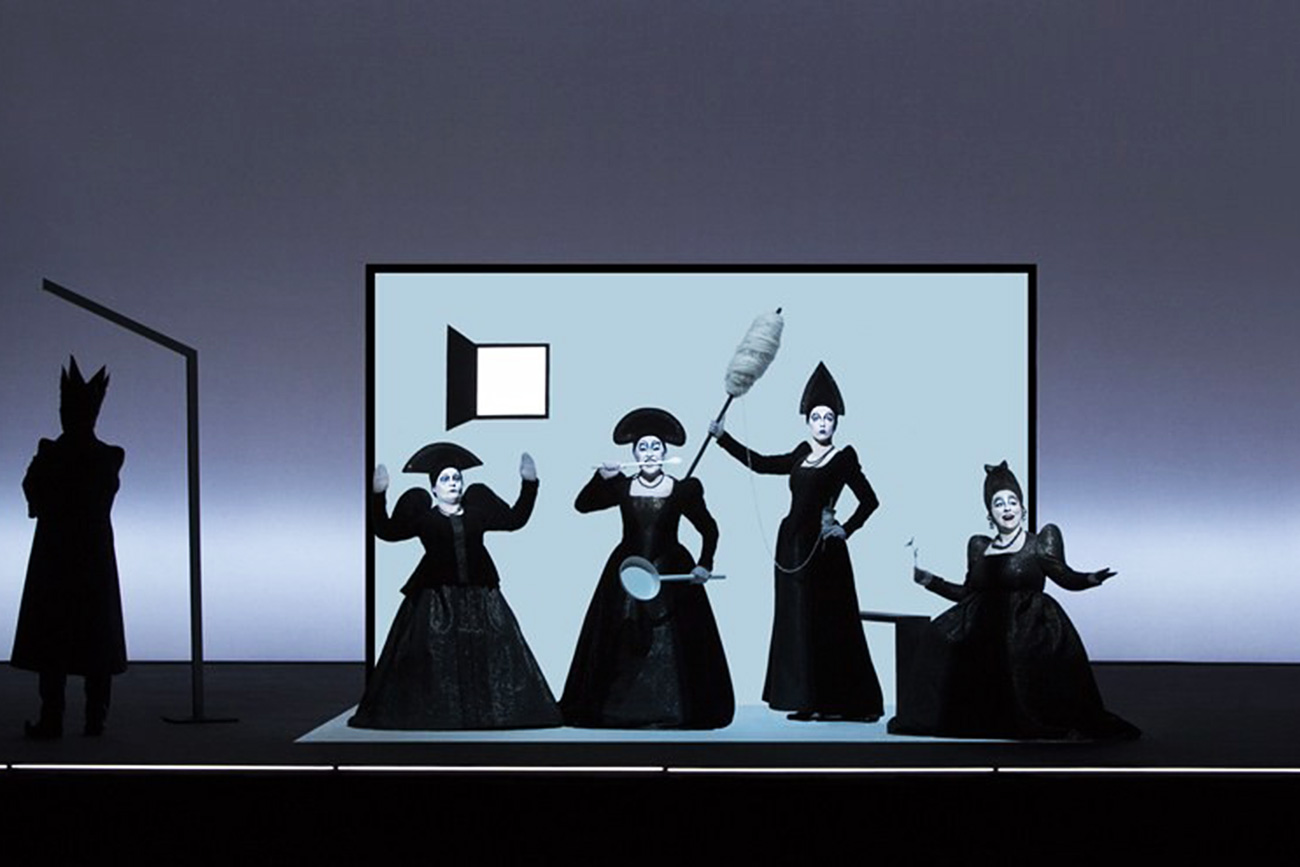5 most off-the-wall stagings of Russian literary works

Josh Groban as Pierre during a performance of "Natasha, Pierre & the Great Comet of 1812," in New York.
AP1. Open air rock-opera Crime and Punishment
During the summer of 2016 Londoners were treated to a great show. The classic novel Crime and Punishment, written by Fyodor Dostoyevsky 150 years ago, was reinvented as a true rock musical in the hands of the British director Phil Willmott.
In Willmott's version, the protagonist Raskolnikov is not a dark character tormented by demons, but more of a hero, a fighter for truth and faith who doesn't want the old lady moneylender (whom he kills) to stand in the way of his freedom and happiness.
 "Crime and Punishment" musical in London. Source: Press photo
"Crime and Punishment" musical in London. Source: Press photo
While Dostoyevsky's Raskolnikov suffers from torments of conscience after the murder, Willmott's character is more aggressive, expressing his feelings with rock ballads and scenes that at times verged on comedy. In one episode, crowds of ugly old women with bloody heads dance around Raskolnikov, driving him to the brink of insanity.
Sonya Marmeladova, Raskolnikov's love interest, performed by the red-haired Rachel Delooze, echoes Magdalena from the rock opera Jesus Christ Superstar and Sansa Stark from Game of Thrones.
2. Pushkin's Fairy Tales
This work is a collaboration between the prominent stage director Robert Wilson and Moscow's Theater of Nations. Wilson's production is far from the iconic interpretations of these folklorish tales, which fire up many people’s imaginations, especially after looking at the famous illustrations by Ivan Bilibin.
The characters are not traditional Russian tsars or a swan-maidens – like in every Wilson production they become freaks with chalk-white faces painted in the Japanese style.
Add oriental motifs accompanied by music from American duet CocoRosie – with elements of rap – and it’s fair to say the vibe is a little different to what people might expect from Pushkin’s tales.
 Pushkin's "Fairy Tales" in Moscow's Theater of Nations. Source: Press photo
Pushkin's "Fairy Tales" in Moscow's Theater of Nations. Source: Press photo
Given the fact that almost all Russians know each Pushkin story like the back of their hand (down to the last word), Wilson partly abandons the plot, leaving only a sense of what is happening. He completely changes the pace of narrative, touching on the grotesque, new refrains, and plenty of humor.
Theater of Nations director, famous actor Yevgeny Mironov, is also involved in the production as a narrator.
3. Anna Karenina, the musical
This Tolstoy novel inspired no more than 30 screen adaptations, a ballet, and dozens of stage performances.
The secret of the novel’s popularity is in its plot – love story, adultery, children – things that are timeless, relevant, and interesting to people no matter which era they live or lived in.
 Valeriya Lanskaya as Karenina at the Moscow Operetta Theater. Source: Press photo
Valeriya Lanskaya as Karenina at the Moscow Operetta Theater. Source: Press photo
The Moscow Operetta Theater has also adapted one of the most adored Russian novels in an unusual way. The main character of the new musical is the train. It blinds the audience with its headlights at the very start of the show and in the finale, Karenina falls under its wheels. Throughout the night, a huge wheel suspended from the ceiling keeps turning - a reminder of inevitable destiny and wicked fate.
The action of the musical takes place against a backdrop of symphonic rock – as the critics have characterized the production’s musical style – performed by a live orchestra.
The musical is still on show in Moscow – karenina-musical.ru
4. ‘Donka’ acrobatic staging of Chekhov
Anton Chekhov is one of the world’s most frequently staged writers – probably only second to William Shakespeare. Swiss director Daniele Finzi Pasca, together with Théâtre Vidy – Lausanne looked at Chekhov’s works in a new way.
Donka is a rod for deep water fishing, and Pasca uses it to catch characters from Chekhov’s stories and bring them on stage. The performance is based on Chekhov’s diaries and notes, and the director translates them into “clowns’ language.”
 A scene from the “Donka (A Letter to Chekhov)” performed at the Mossoviet Theater in Moscow. Source: Vladimir Vyatkin/RIA Novosti
A scene from the “Donka (A Letter to Chekhov)” performed at the Mossoviet Theater in Moscow. Source: Vladimir Vyatkin/RIA Novosti
“I thought of giving shape to the silences contained in the notes of his diaries and of creating images from his annotations,” Finzi Pasca said. “I come from a theatre deeply impregnated with the language of clowns, of jugglers, from the delicate and magical world of acrobats.”
The production premiered at the 2009 Chekhov International Theater Festival in Moscow and was also shown in several theaters across Europe.
5. Three sisters, android-version
That is a theatrical experiment by Japanese director Oriza Hirata. Robots act in the production alongside the actors.
Hirata rewrote the script completely: All the characters were renamed in Japanese, the action happens on a big robot-producing factory. One of the sisters dies and an android replaces her.
 Chekhov's "Three sisters" directed by Oriza Hirata. Source: School of Dramatic Art theater
Chekhov's "Three sisters" directed by Oriza Hirata. Source: School of Dramatic Art theater
In 2013 Hirata brought his show to Moscow and was looking forward to the Russian audiences’ reaction. As Moscow 24 TV Channel wrote, the audience reacted well, they enjoyed the robots, and felt Chekhov’s spirit shine through in the production.
VIDEO: Six Incarnations of Anna Karenina
If using any of Russia Beyond's content, partly or in full, always provide an active hyperlink to the original material.
Subscribe
to our newsletter!
Get the week's best stories straight to your inbox